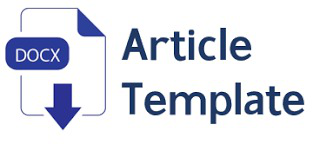Implementasi Peraturan Perundang-Undangan Tentang Diversi Tindak Pidana Anak di Polresta Yogyakarta
DOI:
https://doi.org/10.14421/sh.v7i2.2043Abstract
processes to processes outside criminal justice. Diversion was only implemented in 2014, two years after the enactment of Law No. 11 of 2012 concerning the Child Criminal Justice System. The purpose of implementing diversion is to create restorative justice in the juvenile justice system. Restorative justice is believed to be able to overcome the high rate of child crime in Indonesia. In fact, in Yogyakarta, even though diversion has been implemented, the number of children committing crimes is still high. Based on this, the authors are interested in examining two things, namely examining the related implementation of diversion in Yogyakarta Police towards all criminal offenses that meet the requirements of attempted diversion and to see its implementation in terms of the objectives of the Child Criminal Justice System.
This research uses a jurisdictional-empirical approach by looking at the suitability between the Law and the reality at the Yogyakarta Police. This research is descriptive analysis by conducting interviews and observations as data collection techniques.
The results of this study, the authors conclude that not all child crimes in Yogyakarta Police are attempted diversion according to the mandate of the Child Criminal Justice System Act, even though the criminal offense of the child has fulfilled the requirements for diversion. This is because in practice, in addition to using diversion solutions, Yogyakarta Police also has another solution called "ADR". From the results of this study, the authors conclude that not all forms of restorative justice that are the objectives of the juvenile justice system are achieved. Of the 5 (five) points of the objectives of the juvenile justice system, three of them are achieved, namely: resolving child cases outside the judicial process; Avoid children from deprivation of independence; and Encourage the community to participate. While the other two, achieving peace between victims and children and instilling a sense of responsibility for children, has not been achieved.
References
Peraturan Perundang-Undangan
Undang-undang Dasar (UUD) 1945
Kitab Undang–undang Hukum Pidana
Kitab Undang–undang Hukum Acara Pidana
Undang–undang Nomor 2 Tahun 2002 tentang Kepolisian Negara Republik Indonesia
Undang-undang Nomor 11 Tahun 2012 Tentang Sistem Peradilan Pidana Anak.
Peraturan Mahkamah Agung Nomor 4 Tahun 2014 Tentang Pedoman Pelaksanaan Diversi dalam Sistem Peradilan Pidana Anak.
Peraturan Pemerintah Nomor 65 Tahun 2015 Pedoman Pelaksanaan Diversi Dan Penangan Anak yang Belum Berumur 12 (Dua Belas) Tahun.
Buku
Djamil, M. Nasir, Anak Bukan Untuk Dihukum, Jakarta : Sinar Grafika,2013.
Muhammad, Asy-syekh bin Qasim Al-Ghazy, Fathul Qarib, alih bahasa Achmad Sunarto, Jilid. Ke-2, Surabaya: Al-Hidayah.
Sinaga, Dahlan, Penegakan Hukum Dengan Pendekatan Diversi: Perspektif Teori Keadilan Yang Bermartabat, Yogyakarta: Nusa Media, 2017..
Wahyudi, Setya, Implementasi Ide Diversi Dalam Pembaruan Sistem Peradilan Pidana Anak di Indonesia, Yogyakarta, Genta Publishing, 2011.
Wiyono, R., Sistem Peradilan Pidana Anak Di Indonesia, Jakarta, Sinar Grafika, 2016.
.Jurnal
Hasibuan, Lidya Rahmadani dkk, “Restorative Justice Sebagai Pembaharuan Sistem Peradilan Pidana Berdasarkan UU No.11 Tahun 2012 Tentang Sistem Peradilan Pidana Anak”, Jurnal Hukum Usu, Vol.3.No.3 November 2015.








